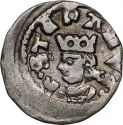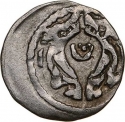You are about to finish your registration. Please check your mailbox (including spam folder). There should be a letter with a confirmation link. Check setting to make sure that your e-mail address is correct.
Send letter againDescription
Béla IV (1206 – 3 May 1270) was King of Hungary and Croatia from 1235 to 1270, and Duke of Styria from 1254 to 1258. As the eldest son of King Andrew II, he was crowned in 1214, though his father opposed it and didn't grant him a province until 1220, making him Duke of Slavonia, Croatia, and Dalmatia. He married Maria, daughter of Theodore I Laskaris, Emperor of Nicaea, around this time. By 1226, Béla governed Transylvania, supporting Christian missions among the pagan Cumans, adopting the title King of Cumania in 1233. He succeeded his father in 1235 and attempted to restore royal authority, causing discontent by reclaiming former royal estates.
The Mongol invasion in 1241 devastated Hungary, and though Béla escaped, he initiated radical reforms to prepare for future invasions. He encouraged the building of stone fortresses and the development of fortified towns, bringing in colonists from the Holy Roman Empire, Poland, and neighboring regions. Béla formed a defensive alliance against the Mongols and temporarily occupied the Duchy of Styria. His later years saw tensions with his son Stephen, leading to a civil war until 1266. Despite these conflicts, Béla was noted for his piety, dying as a Franciscan tertiary, and the veneration of his daughters Kunigunda, Yolanda, and Margaret was confirmed by the Holy See.
Obverse

|
Depicts a portrait of Béla IV in a kneeling position, holding a scepter and a globe. The edge is adorned with a pearl pattern. |
|---|---|
Reverse

|
Depicts a crowned, double-headed eagle. |
| Edge |



